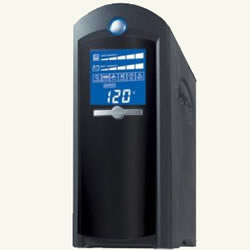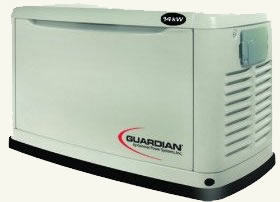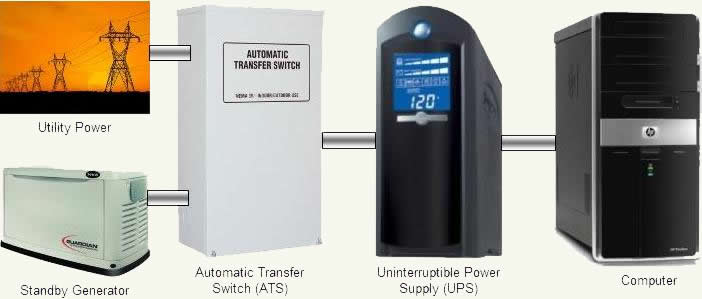
Figure 1 - Uninterruptible Power Supply
The purpose of an uninterruptible power supply (UPS) is to provide instantaneous replacement power to specific devices, such as computers and their associated peripherals, in the event of the loss of electricity normally provided from an outside source such as a power generation utility.
Uninterruptible power supplies have a battery or batteries that are continuously under charge. The batteries, for all intent purposes, instantaneously deliver electrical power to those devices plugged into them. In most cases, uninterruptible power supplies are used to supply short term electrical power. When powering computers the intent, in most cases, is to provide enough power to allow the computers to be shutdown properly.

Figure 2 - 14kw standby generator
They can however be installed to supply longer term power. The length of time that they will supply electricity is primarily a function of the size of the batteries installed in the UPS versus the power being drawn from the equipment plugged into it The UPS is rated in Watts and or VA (Volt, Amps).
A standby generator (Figure 2) with an Automatic Transfer Switch supplies power, however there is a time lag between the loss of utility power and the availability of the power coming from the standby generator.
The standby generator with its ATS is actually designed to wait a period of time, anywhere from one to five minutes before it turns on. This avoids having the standby generator try to operate when utility power is flickering - going off and on over very short periods of time, which would be exceedingly hard on all of the standby generators components.
The standby generator, requires a time period to ramp up in order to provide power, hence the power from the standby generator even if it started immediately would not be available instantaneously. Electrical devices, such as computers would have lost electrical power, long enough for them to require restarting.
Standby generators will, as a general statement, provide power for a much longer period of time than an uninterruptible power supply. They do not deliver power through charged batteries, but via an engine turning a generator. The limitation to the length of time that they will deliver their rated power is dependent on how much fuel the engine has available to continue to operate.
If long term, uninterruptible power is required then best designed systems use a combination of standby generators and uninterruptible power supplies as shown in Figure 3.

Figure 3 - Utility or standby generator powering a UPS powering a computer
With this configuration, under normal conditions utility power will keep the batteries in the uninterruptible power supply full charged and supply power to the computer.
In the event of a utility power failure, the UPS would supply electrical power to the computer until the standby generator is up to speed and can take over the on going supply of electrical power, while continuing to charge the batteries in the UPS.
The computer would not have lost power during the period that the utility was down, nor during the period of time that it took for the standby generator to commence supplying electrical power.
